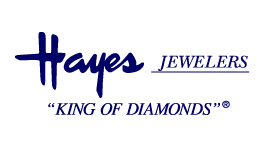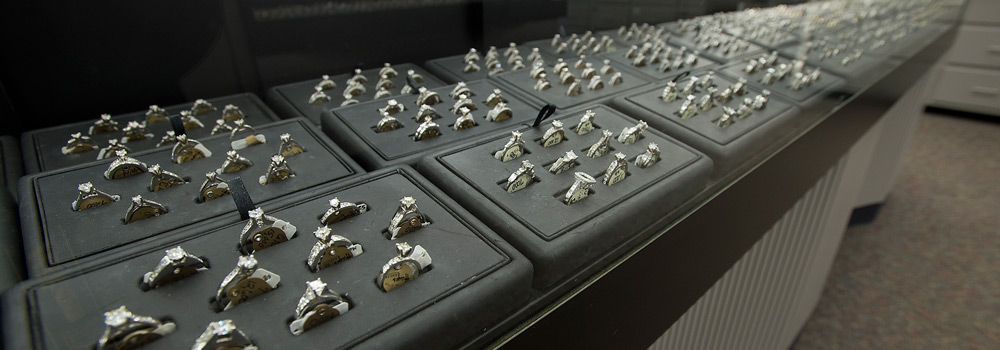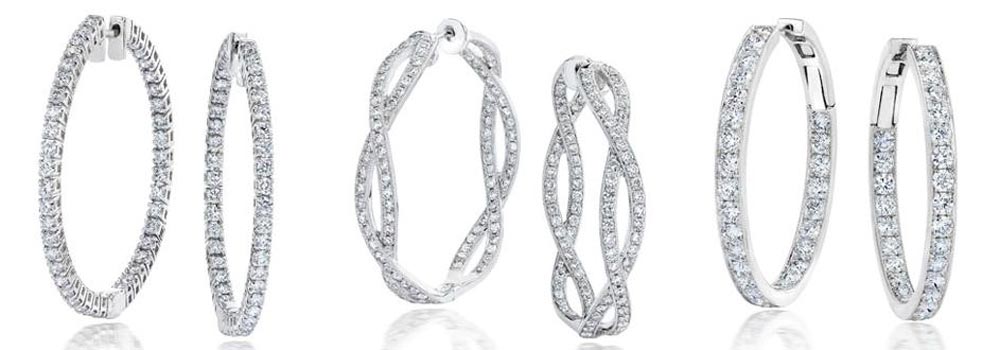Diamond Rings, Necklaces, Bracelets, Loose Diamonds » at Hayes Jewelers in Lexington, NC
We have the largest selection of loose diamonds in the Triad!
We carry all shapes, sizes and cuts of diamonds - many that you cannot find anywhere else.
Looking for a certified diamond? We have many to choose from, as well as a G.I.A. graduate gemologist on site.
- Loose Diamonds


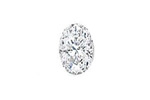


- Engagement Rings
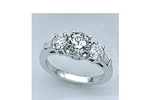

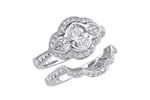
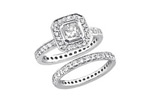
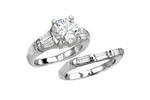
- Diamond Rings





- Diamond Necklaces
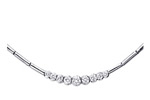
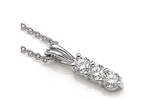

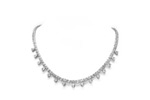

- Diamond Bracelets

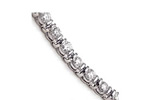
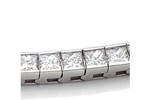
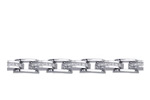
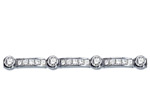
- Diamond Earrings
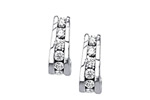
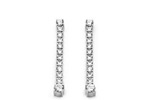

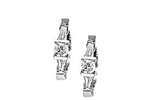
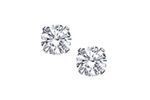
- Remounts and
Custom Mounts




The Four C’s of Diamonds
Many people are confused about how diamonds are priced. The best explanation is that asking for the price of a diamond is like asking for the price of a house. A real estate agent can’t quote you a price for a house without knowing its size, condition, location, etc. This process is the same one used when buying a diamond. A diamond’s beauty, rarity, and price depend on the interplay of all the 4Cs—cut, color, clarity, and carat.
The 4Cs are used throughout the world to classify the rarity of diamonds. Diamonds with the combination of the highest 4C ratings are more rare and, consequently, more expensive. No one C is more important than another in terms of beauty and it is important to note that each of the 4Cs will not diminish in value over time.
Once you have established those 4C characteristics that are most important to you, a jeweler can then begin to show you various options with quoted prices. Use the links below to learn more about the 4Cs.
- Cut
 The better the proportions of a diamond are, the more Fire, Sparkle, Scintillation, and Brilliance it will have. This also directly affects the price of the diamond. Ideal cut diamonds are rarer and cost more. Ideal cut round diamonds have a table % between 52 and 57%. There is no dimension on depth, but most people prefer the depth to be between 59 and 62.5% There is also another train of thought that believes that the perfect diamond has a 60-60 make. That means that the depth should be as close to 60% as possible with a few degrees variance either way, and the table should be as close to 60% with a couple of degrees variance either way being acceptable. Our take on it is this, while there is nothing more breathtaking than a textbook "ideal cut", you can save some money by going with a slightly off make. We suggest: Depth: 58-63% Table: 52-61%. If you stay within these parameters, you should end up with a very beautiful diamond. You can stray one or two degrees outside of these parameters, but the farther away from ideal you go, the more it starts to affect the beauty of the diamond. Below is a diagram of what happens when a diamond is out of shape. If the diamond is too deep or two shallow, the light will leak out of the diamond through the bottom instead of shining brightly back up into your eyes.
The better the proportions of a diamond are, the more Fire, Sparkle, Scintillation, and Brilliance it will have. This also directly affects the price of the diamond. Ideal cut diamonds are rarer and cost more. Ideal cut round diamonds have a table % between 52 and 57%. There is no dimension on depth, but most people prefer the depth to be between 59 and 62.5% There is also another train of thought that believes that the perfect diamond has a 60-60 make. That means that the depth should be as close to 60% as possible with a few degrees variance either way, and the table should be as close to 60% with a couple of degrees variance either way being acceptable. Our take on it is this, while there is nothing more breathtaking than a textbook "ideal cut", you can save some money by going with a slightly off make. We suggest: Depth: 58-63% Table: 52-61%. If you stay within these parameters, you should end up with a very beautiful diamond. You can stray one or two degrees outside of these parameters, but the farther away from ideal you go, the more it starts to affect the beauty of the diamond. Below is a diagram of what happens when a diamond is out of shape. If the diamond is too deep or two shallow, the light will leak out of the diamond through the bottom instead of shining brightly back up into your eyes. - Color
 The highest, rarest and most expensive color is D and goes down in alphabetical order. D, E and F are considered colorless. G, H and I are considered near colorless. J, K and L are faint yellow and M, N, O are light yellow. The color and the price keep going down until you reach fancy yellow and then it starts to go up again.
The highest, rarest and most expensive color is D and goes down in alphabetical order. D, E and F are considered colorless. G, H and I are considered near colorless. J, K and L are faint yellow and M, N, O are light yellow. The color and the price keep going down until you reach fancy yellow and then it starts to go up again. - Clarity
 The better the diamonds clarity, the more rare and valuable it is. All diamonds have inclusions, even internally flawless diamonds. You just need more magnification to see them. Diamonds are graded with a 10x magnification loupe. There are several grades of clarity, but they all fit into one of two categories: ones with eye visible inclusions and ones with no eye visible inclusions. Diamonds that show eye visible inclusions are I Clarity, either I1, I2 or I3. I1 diamonds have one or two very tiny eye visible inclusions. I2 have more and I3 are heavily included. Those that are completely eye clean are most desirable. SI2 and better diamonds are completely eye clean. SI2 and better diamonds require a 10x loupe to see the difference. An SI2 will look exactly like an IF to the naked eye. Flawless "FL" and internally flawless "IF" are the rarest and most expensive diamonds. The next grade is VVS1 and VVS2. This stands for "very very small" inclusions, then very small inclusions, VS1 and VS2 and finally small inclusions SI1, SI2 and SI3.
The better the diamonds clarity, the more rare and valuable it is. All diamonds have inclusions, even internally flawless diamonds. You just need more magnification to see them. Diamonds are graded with a 10x magnification loupe. There are several grades of clarity, but they all fit into one of two categories: ones with eye visible inclusions and ones with no eye visible inclusions. Diamonds that show eye visible inclusions are I Clarity, either I1, I2 or I3. I1 diamonds have one or two very tiny eye visible inclusions. I2 have more and I3 are heavily included. Those that are completely eye clean are most desirable. SI2 and better diamonds are completely eye clean. SI2 and better diamonds require a 10x loupe to see the difference. An SI2 will look exactly like an IF to the naked eye. Flawless "FL" and internally flawless "IF" are the rarest and most expensive diamonds. The next grade is VVS1 and VVS2. This stands for "very very small" inclusions, then very small inclusions, VS1 and VS2 and finally small inclusions SI1, SI2 and SI3.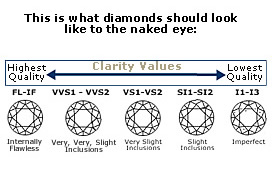 Notice the small inclusions near the sides of the I1 Clarity diamond. The facets will, for the most part, hide those inclusions from being seen. An SI3 diamond will look just like the I1 except without the eye visible inclusion in the table. I2 and I3 diamonds have more inclusions and they tend to be bigger and more noticeable as well.
Notice the small inclusions near the sides of the I1 Clarity diamond. The facets will, for the most part, hide those inclusions from being seen. An SI3 diamond will look just like the I1 except without the eye visible inclusion in the table. I2 and I3 diamonds have more inclusions and they tend to be bigger and more noticeable as well. - Carat Weight
 The larger the diamond, the more rare and valuable it becomes. Diamonds are measured in carat weight. One carat is 100 points. Ex: A 75 point diamond = 3/4 carat or 0.75ct. Carat is expressed as "carat" or "ct". Do not confuse carat with Karat, which refers to the purity of gold.
The larger the diamond, the more rare and valuable it becomes. Diamonds are measured in carat weight. One carat is 100 points. Ex: A 75 point diamond = 3/4 carat or 0.75ct. Carat is expressed as "carat" or "ct". Do not confuse carat with Karat, which refers to the purity of gold.
